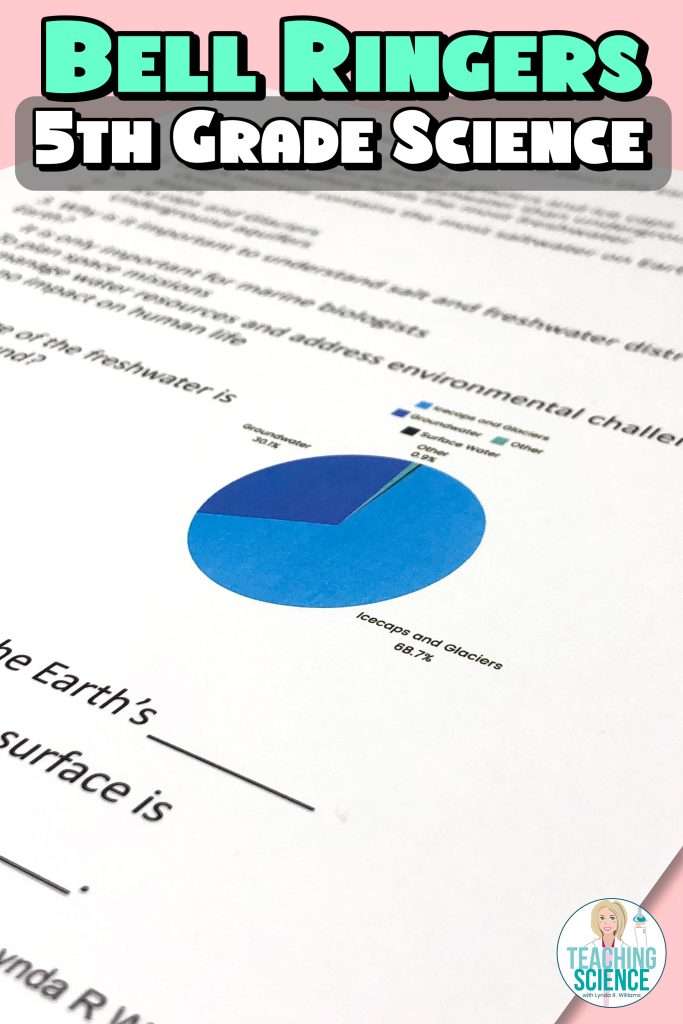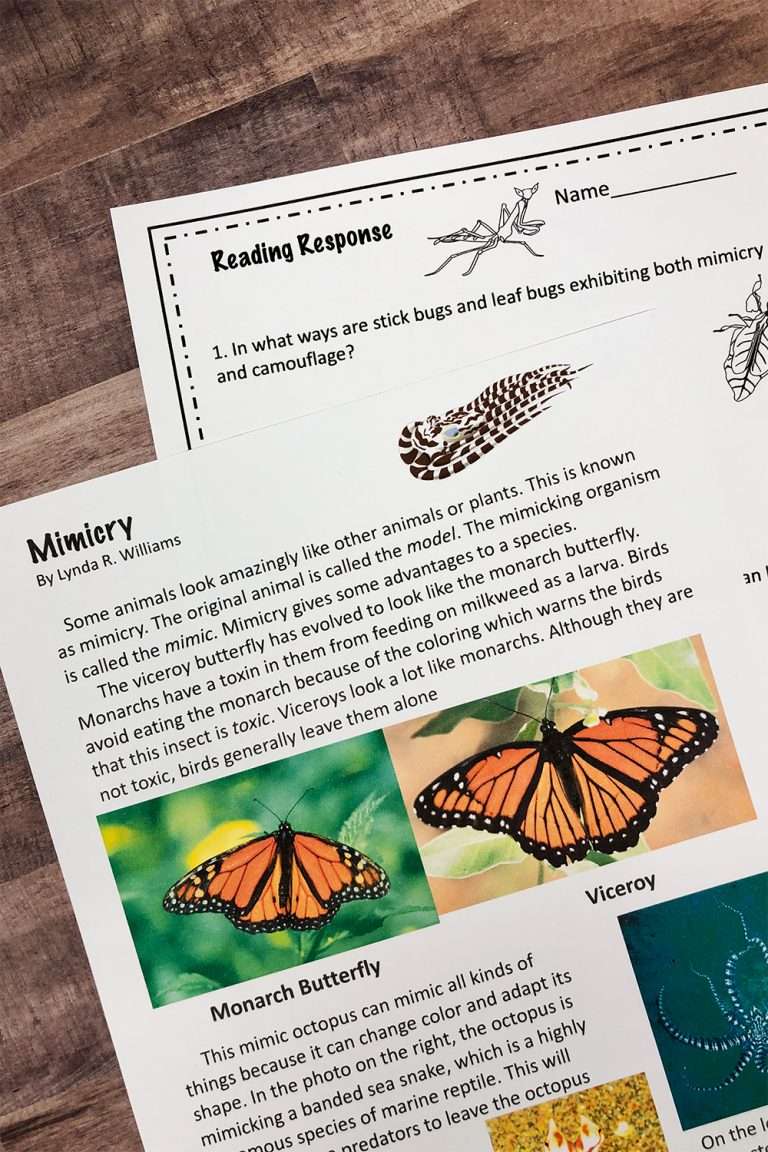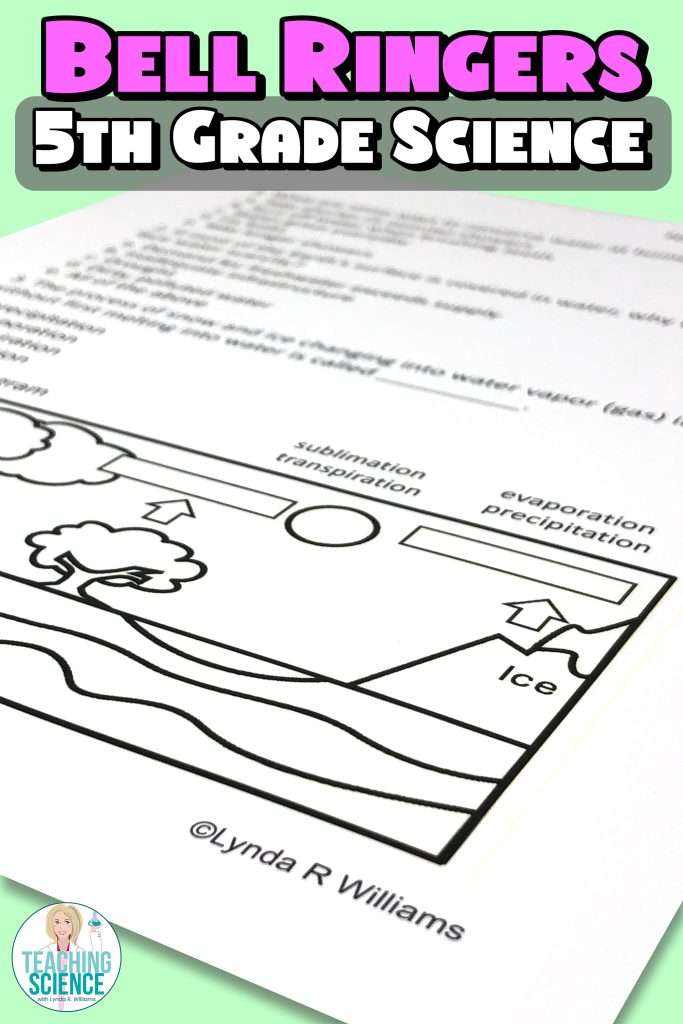
Do you need some 5th grade science bell ringers?
5th grade science bell ringers are an excellent way for your class to review, warm up, or give you a short break to get set up!
These bell ringers cover the concepts of sphere interaction, biosphere, hydrosphere, atmosphere, water distribution on Earth, saltwater and freshwater, groundwater, water scarcity, water cycle, and clean water.
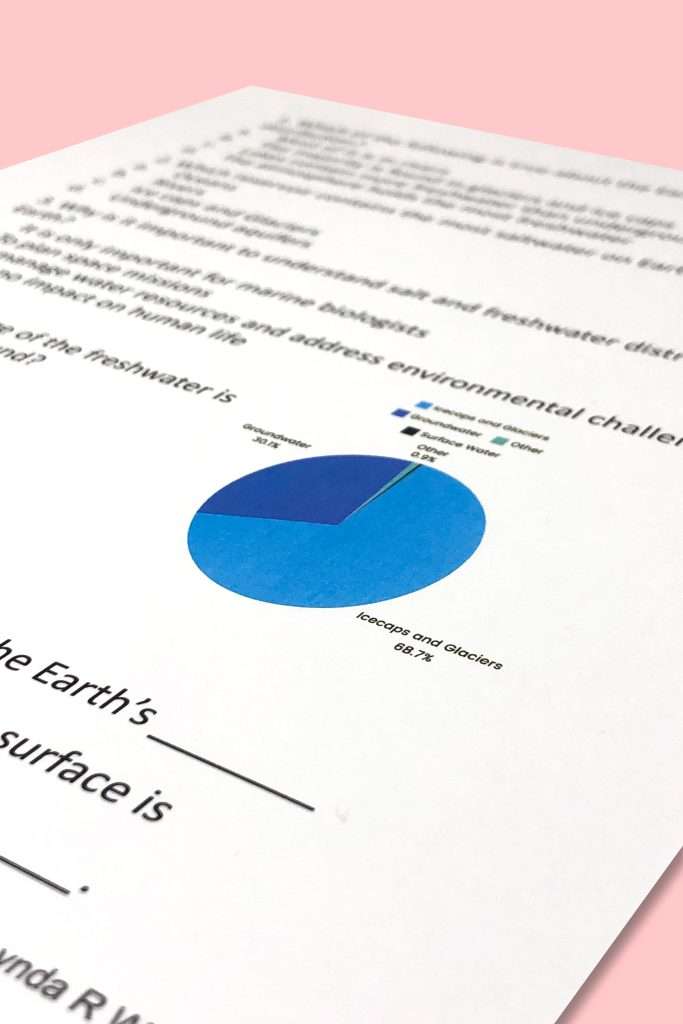
This resource is a set of 20 bell ringers in both printable and digital format via Google Forms™.
Using the Google Forms bell ringers is easy. Simply open the document, scroll to the page with the list of digital bell ringers, and select the bell ringer you want to assign. A clean copy of the bell ringer will be instantly copied to your Google Drive!
Do you want some 5th-grade science bell ringers? They are a great way to review 5th-grade science concepts on water distribution on Earth and Earth’s spheres. This set includes 20 bell ringers for Earth Science (SET One) in 5th grade. Each bell ringer will take about ten minutes for students to complete. They come in printable full-page format (PDF) and Google Forms™.
What is included in the 5th grade SET One Bell Ringers?
- 20 printable bell ringers (full page)
- 20 Google Forms™ (self-grading)
- Answer Keys
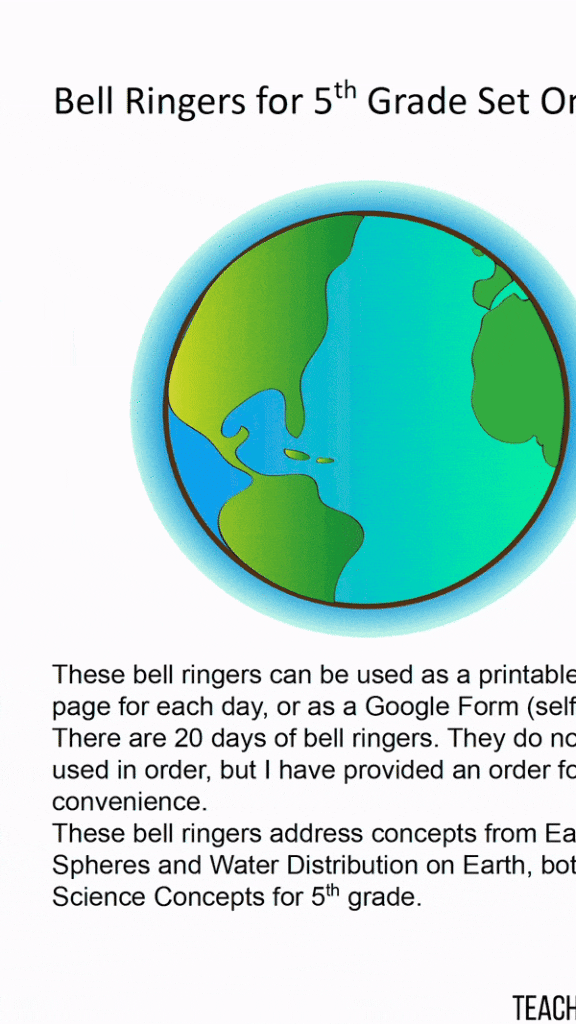
This standards-aligned resource covers NGSS 5-ESS2-1, 5-ESS2-2, and Utah SEEd 5.1.2 and 5.1.4.
With all my standards-aligned resources, you can be sure that you are covering the information that you need to.
NGSS 5-ESS2-1: Develop a model using an example to describe ways the geosphere, biosphere, hydrosphere, and/or atmosphere interact.
NGSS 5-ESS2-2: Describe and graph the amounts of salt water and fresh water in various reservoirs to provide evidence about the distribution of water on Earth.
Utah SEEd 5.1.2: Use mathematics and computational thinking to compare the quantity of saltwater and freshwater in various reservoirs to provide evidence for the distribution of water on Earth. Emphasize reservoirs such as oceans, lakes, rivers, glaciers, groundwater, and polar ice caps. Examples of using mathematics and computational thinking could include measuring, estimating, graphing, or finding percentages of quantities.
Utah SEEd 5.1.4: Develop a model to describe interactions between Earth’s systems including the geosphere, biosphere, hydrosphere, and/or atmosphere. Emphasize interactions between only two systems at a time. Examples could include the influence of a rainstorm in a desert, waves on a shoreline, or mountains on clouds.
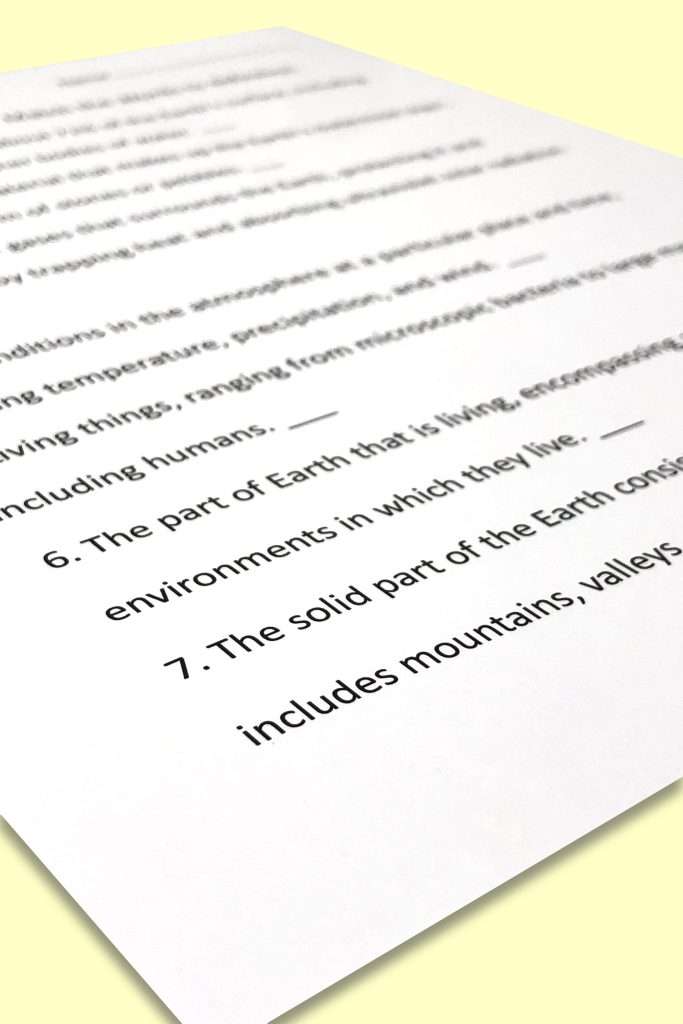
Other 5th-grade science teachers LOVE these bell ringers!
Check out more of the perfect reviews on Teachers Pay Teachers.
I love these bell ringers for 5th grade. We use these everyday and they are a great way to review the learning.
-Emily S.
I have been using these for morning work in Google Classroom and in pairs when I print them. great item.
-Susan E.
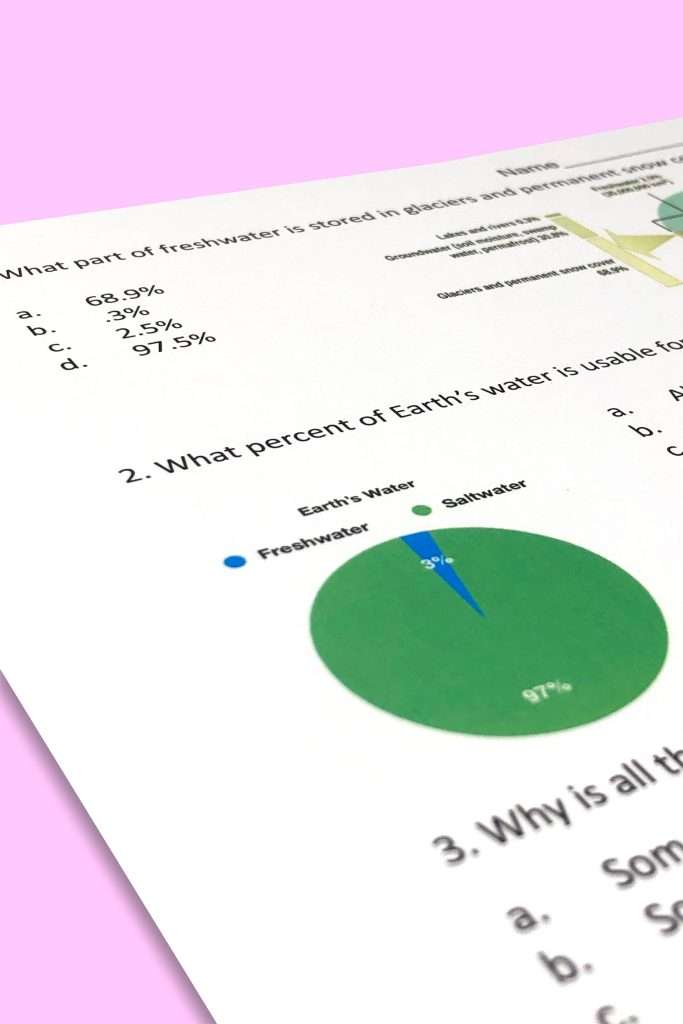
Try these bell ringers in your 5th grade science class TODAY:

This resource is available for download in two places:
Both downloads are identical in every way – if you download directly from this site, you’re giving me the maximum support!
Either way, your satisfaction is 100% guaranteed.
This site uses 100% secure checkout with PayPal, and after checkout, your download is instantly available.
Thank you, and I hope you enjoy using this resource in your classroom!

